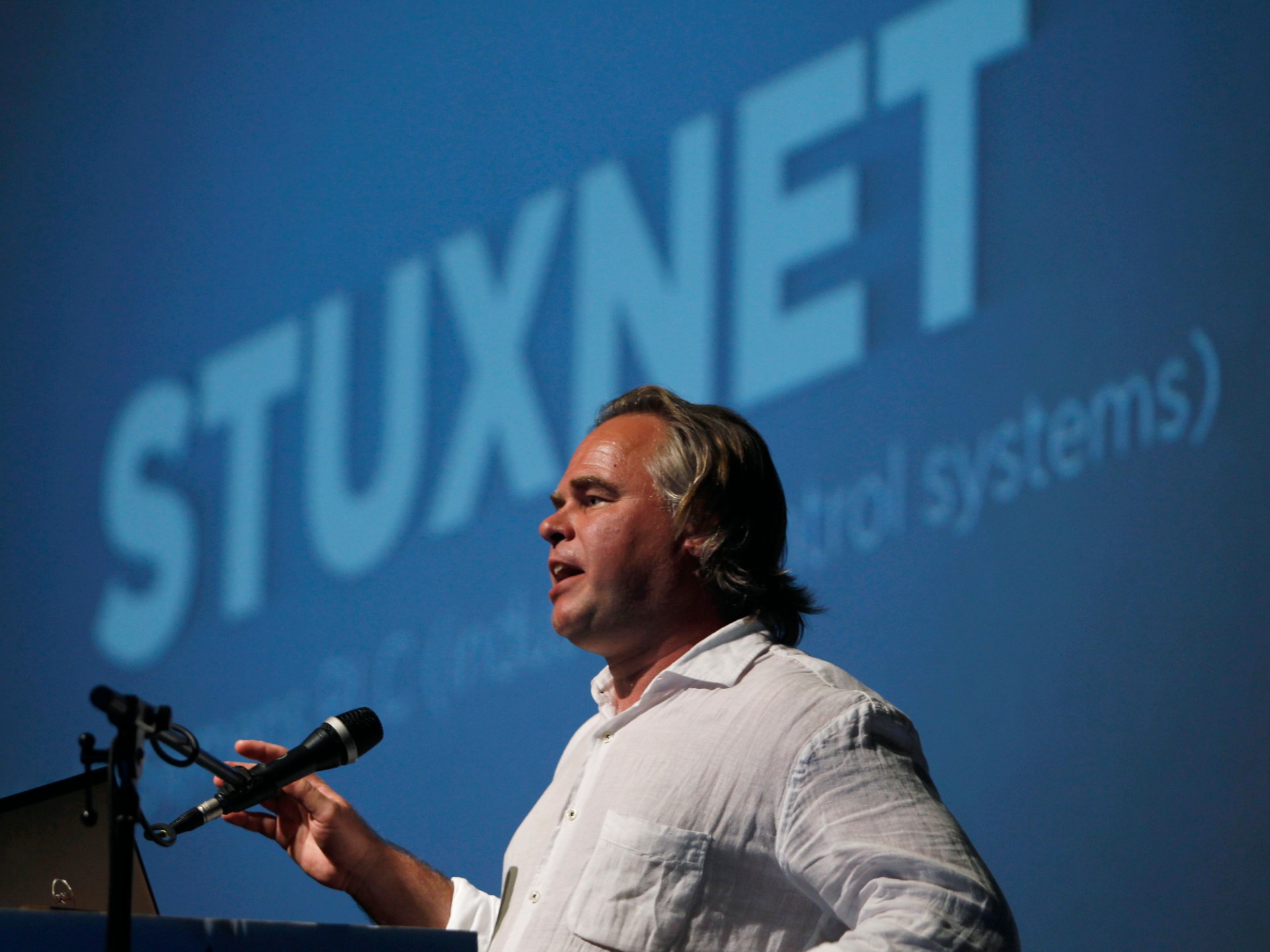
EXPLAINER
From cyberattacks and assassinations to drone strikes, Israel-linked plots have targeted Iran and its nuclear programme for years.
Israel’s leaders have signalled that they are weighing their options on how to respond to Iran’s attack early Sunday morning, when Tehran targeted its archenemy with more than 300 missiles and drones.
Iran’s attack, which followed an Israeli strike last week on the Iranian consulate in Damascus, Syria, that killed 13 people was historic: It was the first time Tehran had directly targeted Israeli soil, despite decades of hostility. Until Sunday, many of Iran’s allies in the so-called axis of resistance — especially the Palestinian group Hamas, the Lebanese group Hezbollah, Yemen’s Houthis and armed groups in Iraq and Syria — were the ones who launched missiles and drones at Israel.
But if Israel were to hit back militarily inside Iran, it wouldn’t be the first time. Far from it.
For years, Israel has focused on one target within Iran in particular: the country’s nuclear programme. Israel has long accused Iran of clandestinely building a nuclear bomb that could threaten its existence — and has publicly, and frequently, spoken of its diplomatic and intelligence-driven efforts to derail those alleged efforts. Iran denies that it has had a military nuclear programme, while arguing that it has the right to access civil nuclear energy.
As Israel prepares its response, here’s a look at the range of attacks in Iran — from drone strikes and cyberattacks to assassinations of scientists and the theft of secrets — that Israel has either accepted it was behind or is accused of having orchestrated.
Assassinations of Iranian scientists
- January 2010: A physics professor at Tehran University, Masoud Ali-Mohammadi, was killed through a remote-controlled bomb planted in his motorcycle. Iranian state media claimed that the US and Israel were behind the attack. The Iranian government described Ali-Mohammadi as a nuclear scientist.
- November 2010: A professor at the nuclear engineering faculty at Shahid Beheshti University in Tehran, Majid Shahriari, was killed in a car explosion on his way to work. His wife was also wounded. The president of Iran at the time, Mahmoud Ahmadinejad, blamed the United States and Israel for the attacks.
- January 2012: Mostafa Ahmadi Roshan, a chemical engineering graduate, was killed by a bomb placed on his car by a motorcyclist in Tehran. Iran blamed Israel and the US for the attack and said Ahmadi Roshan was a nuclear scientist who supervised a department at Iran’s primary uranium enrichment facility, in the city of Natanz.
- November 2020:Prominent nuclear scientist Mohsen Fakhrizadeh was killed in a roadside attack outside Tehran. Western and Israeli intelligence had long suspected that Fakhrizadeh was the father of an Iranian nuclear weapons programme. He was sanctioned by the United Nations in 2007 and the US in 2008.
- May 2022: Colonel Hassan Sayyad Khodaei of the Islamic Revolutionary Guard Corps (IRGC) was shot five times outside of his home in Tehran. Majid Mirahmadi, a member of Iran’s Supreme National Security Council, alleged the assassination was “definitely the work of Israel”.
Israel’s cyberattacks on Iran
- June 2010:The Stuxnet virus was found in computers at the nuclear plant in Iran’s Bushehr city, and it spread from there to other facilities. As many as 30,000 computers across at least 14 facilities were impacted by September 2010. At least 1,000 out of 9,000 centrifuges in Iran’s Natanz enrichment facility were destroyed, according to an estimate by the Institute for Science and International Security. Upon investigation, Iran blamed Israel and the US for the virus attack.
- April 2011: A virus called Stars was discovered by the Iranian cyberdefence agency which said the malware was designed to infiltrate and damage Iran’s nuclear facilities. The virus mimicked official government files and inflicted “minor damage” on computer systems, according to Gholamreza Jalali, the head of Iran’s Passive Defense Organization. Iran blamed Israel and the US.
- November 2011: Iran said it discovered a new virus called Duqu, based on Stuxnet. Experts said Duqu was intended to gather data for future cyberattacks. The Iranian government announced it was checking computers at main nuclear sites. The Duqu spyware was widely believed by experts to have been linked to Israel.
- April 2012: Iran blamed the US and Israel for malware called Wiper, which erased the hard drives of computers owned by the Ministry of Petroleum and the National Iranian Oil Company.
- May 2012: Iran announced that a virus called Flame had tried to steal government data from government computers. The Washington Post reported that Israel and the US had used it to collect intelligence. Then-Israeli Vice Prime Minister Moshe Yaalon did not confirm the nation’s involvement but acknowledged that Israel would use all means to “harm the Iranian nuclear system”.
- October 2018: The Iranian government said that it had blocked an invasion by a new generation of Stuxnet, blaming Israel for the attack.
- October 2021: A cyberattack hit the system that allows Iranians to use government-issued cards to purchase fuel at a subsidised rate, affecting all 4,300 petrol stations in Iran. Consumers had to either pay the regular price, more than double the subsidised one, or wait for stations to reconnect to the central distribution system. Iran blamed Israel and the US.
- May 2020: A cyberattack impacted computers that control maritime traffic at Shahid Rajaee port on Iran’s southern coast in the Gulf, creating a hold-up of ships that waited to dock. The Washington Post quoted US officials as saying that Israel was behind the attack, though Israel did not claim responsibility.
Israel’s drone strikes and raids on Iran
- January 2018: Mossad agents raided a secure Tehran facility, stealing classified nuclear archives. In April 2018, Israeli Prime Minister Benjamin Netanyahu announced that Israel discovered 100,000 “secret files that prove” Iran lied about never having a nuclear weapons programme.
- February 2022: Former Israeli Prime Minister Naftali Bennett admitted in an op-ed published in The Wall Street Journal in December 2023, that Israel carried out an attack on an unmanned aerial vehicle, and assassinated a senior IRGC commander in February of the previous year.
- May 2022: Explosives-laden quadcopter suicide drones hit the Parchin military complex southeast of Tehran, killing an engineer and damaging a building where drones had been developed by the Ministry of Defence and Armed Forces. IRGC Commander Hossein Salami pledged retaliation against unspecified “enemies”.
- January 2023: Several suicide drones struck a military facility in central Isfahan, but they were thwarted and caused no damage. While Iran did not immediately place blame for the attacks, Iran’s UN envoy, Amir Saeid Iravani, wrote a letter to the UN chief saying that “primary investigation suggested Israel was responsible”.
- February 2024: A natural gas pipeline in Iran was attacked. Iran’s Oil Minister Javad Owji alleged that the “explosion of the gas pipeline was an Israeli plot”.
Read More: World News | Entertainment News | Celeb News
Aljazera










